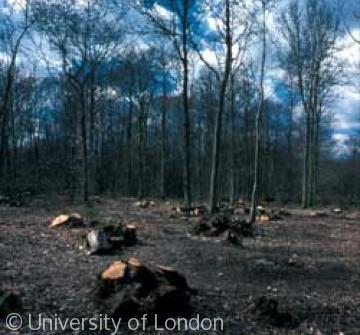Coppicing at Parham

The very best oak building timber at the end of the 16th century came from woods which were specifically managed to produce tall, straight trees for posts, beams, and rafters. Such oaks, known as ‘standards’, were grown in the company of species such as hazel which were cut almost to the ground on a regular, cyclical basis and used for necessities such as fuel and fencing. This system of regular cutting is known as coppicing. It not only ensures an almost constant supply of wood which can be harvested again and again as soon as it reaches an appropriate size, but also provides the perfect environment for growing trees suitable for building timber. Between harvests, the coppiced wood grows rapidly — as anyone who has pruned a young tree or shrub will know. The dense new growth forces the young standard timber trees to grow more swiftly than they would in the open, as they are competing for light. The oaks form a crown high above the level of the coppice, unable to throw out lower branches because of the surrounding undergrowth, so lessening the risk of knots which can weaken structural timbers.
[i]
--------------------------------------------------------------------------------
[i] O. Rackham, Trees and Woodland in the British Landscape (London, 1976), 8.(Image courtesy of the Woodland Trust Picture Library)
Content generated during research for the paperback book 'Parham: An Elizabethan House and its Restoration' (ISBN 978-1-86077-485-0) for the England's Past for Everyone series


